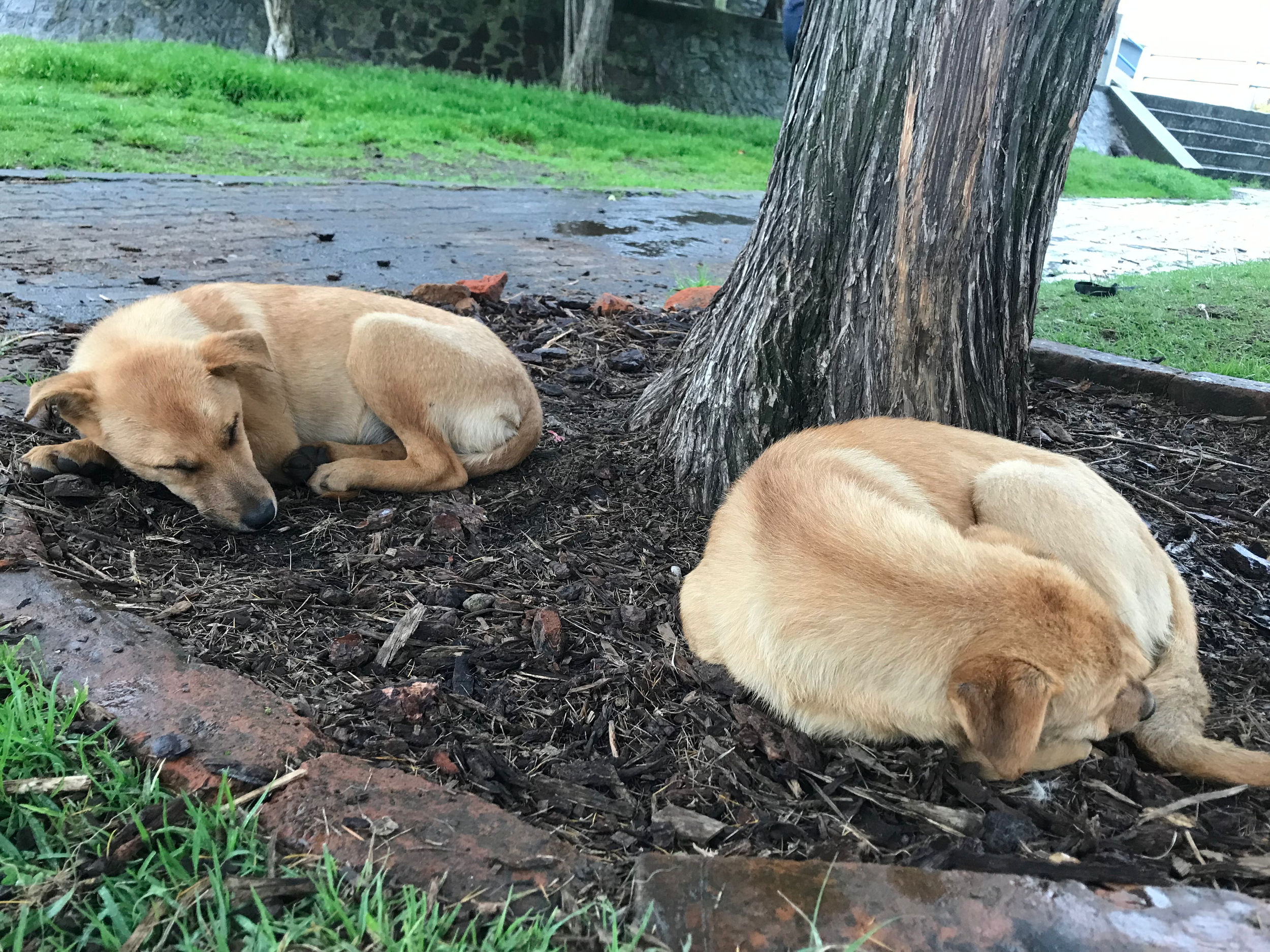
ACC&D-Sponsored Zeuterin Field Studies

ACC&D is committed to advancing non-surgical fertility control options that are safe, humane, and economical. We also recognize the importance of understanding and sharing information on how non-surgical sterilants can most effectively be used within a community, veterinary practice, or animal shelter. Below, you’ll find reports from ACC&D-supported field studies conducted between 2009 and 2012 that have contributed data on “best practices” and behavioral considerations related to use of Zeuterin (distributed as EsterilSol during the timeframe of these studies) for male dogs.
Behavior assessment of free-roaming dogs after two neutering methods
Zeuterin™ was carefully evaluated for safety during the process of U.S. Food & Drug Administration approval. However, there is a dearth of objective information on the behavioral effects of neutering male dogs using Zeuterin/EsterilSol—or for that matter, surgical castration—relative to an intact (unneutered) animal. In 2011, A team organized by Veterinarians Without Borders/Vétérinaires sans Frontières-Canada (VWB/VSF) aimed to change this.
The study setting: Puerto Natales, a small and isolated city in the Patagonia region of Chile. Like so many other communities across the globe, Puerto Natales struggles with large street dog populations. Not only do many of these dogs suffer serious health and welfare consequences; they also threaten subsistence farmers’ livestock and pose risks to human health in the form of disease transmission, aggression, and dog bites. In short, Puerto Natales was an ideal location in which to support humane dog population control efforts, and with permission from community leaders, to conduct this behavior study.
Using data gathered through over 1,200 hours of video recordings of 118 free-roaming dogs, the team analyzed 57 canine behaviors. The team also used GPS collars to evaluate dogs’ home ranges and tendencies to roam, the latter a behavior commonly believed to diminish with surgical castration and its associated decrease in testosterone production.
The Puerto Natales study demonstrated tremendous variation in dogs’ roaming ranges, which spanned from under half an acre to over 8 square miles (21 square kilometers). Roaming distance was affected positively by higher testosterone and negatively by increasing age; in other words, younger dogs with higher testosterone levels (measured in a companion study) tended to travel further than their older, lower-testosterone counterparts.
Analyses using video recording homed in on four overarching behavioral traits: general activity, social activity, sexual activity, and aggression directed at other dogs. Analyses also spoke to the fact that we cannot assume that surgical or chemical sterilization (or no sterilization at all) will have a consistent impact on a dog’s behavior. For several measures, analysis found no significant behavioral differences between treatments. Analysis also spoke to the importance of inherent (e.g., breed, age, sex, testosterone levels) and environmental (e.g., weather, food, interactions with other people and dogs) factors in influencing behavior. In short, free-roaming dog behavior is complicated!
The work in Puerto Natales is vital to enhancing our appreciation of free-roaming dog behavior and helping people—veterinarians, community members, pet owners, animal welfare experts, and municipal authorities alike—better understand and care for these populations.
Study results were published in Preventive Veterinary Medicine in January 2016.
Todos Santos, Guatemala Sterilization Program and EsterilSol Field Study
In 2009, ACC&D helped to support a Veterinarians Without Borders/Vétérinaires sans Frontières-Canada (VWB/VSF) campaign that utilized EsterilSol as part of a multifaceted community initiative in Todos Santos, Guatemala. The remote community had asked VWB/VSF-Canada to assist in managing the dog population when local attempts to control numbers through culling (including strychnine poisoning and killing puppies after birth) had proven at once inhumane and unsuccessful.
In keeping with a community-focused approach to canine population control, the VWB/VSF team began its multifaceted initiative by meeting with diverse stakeholders to gain an understanding of the community, after which it conducted a dog population census to determine numbers of animals and identify realistic targets for humane population management. The team also reached out to individual households to gather resident and dog owner data—which showed, among other things, a slight preference for chemical sterilization over surgical castration. This comprehensive community approach yielded critical information for VWB/VSF to launch a campaign to educate and promote the fundamental reason they were called to Todos Santos: dog sterilization.
During the implementation phase of the project, 126 male dogs were successfully sterilized with EsterilSol, with positive results. EsterilSol was selected as the method of sterilization for male dogs because of its relative ease in administration, which was essential in enabling this small team to perform the greatest number of sterilization procedures with limited resources. In challenging field conditions, adverse reactions occurred in just 2 dogs out of the 126. More broadly, learning from this campaign has expanded understanding about EsterilSol and its uses. It has shown us the considerable positive impact that non-surgical sterilants such as EsterilSol can have in certain localities. In a community where numerous obstacles to surgical castration exist—including primitive field conditions, scarce resources, and cultural aversion to castration—EsterilSol proved to be an excellent solution.
EsterilSol Small Grants Program (ESGP)
ACC&D's EsterilSol™ Small Grants Program (ESGP) was developed in 2009 with a dual purpose: first, to assist nonprofit organizations seeking to extend the reach of their sterilization efforts by incorporating EsterilSol (Zeuterin™); and second, to gather data to advance learning about field use of this non-surgical sterilant.
Between 2009 and 2010, ACC&D awarded grants to five international not-for-profit organizations: Sentir Animal (Colombia); Animal Balance (Dominican Republic, Galapagos Islands, and Samoan Islands), Veterinarians Without Borders/Veterinaires Sans Frontiers-Canada (Chile), Sierra Leone Animal Welfare Society (Sierra Leone), and Kenya Society for the Protection and Care of Animals (Kenya). All five organizations incorporated education and community outreach in addition to sterilization services. Among the many valuable lessons from these studies was the significance of public health as a connective and galvanizing force in under-resourced communities, and the critical need to understand and allow time to properly address local requirements to import Zeuterin.
One complication in a few of these studies was an unexpected number of adverse reactions among canines who were treated, many seemingly brought about by improper injection technique and absence of a controlled setting for the procedure. This led ACC&D to emphasize the importance of EsterilSol being administered only by trained veterinary professionals and in environments where close post-procedure supervision can take place. When Zeuterin (the same product formulation as EsterilSol) was relaunched in the United States in 2014, the manufacturer required a formal training process for veterinarians to reduce the likelihood of injection site complications.
To learn more about Zeuterin/EsterilSol, please visit our webpage devoted to this product.
